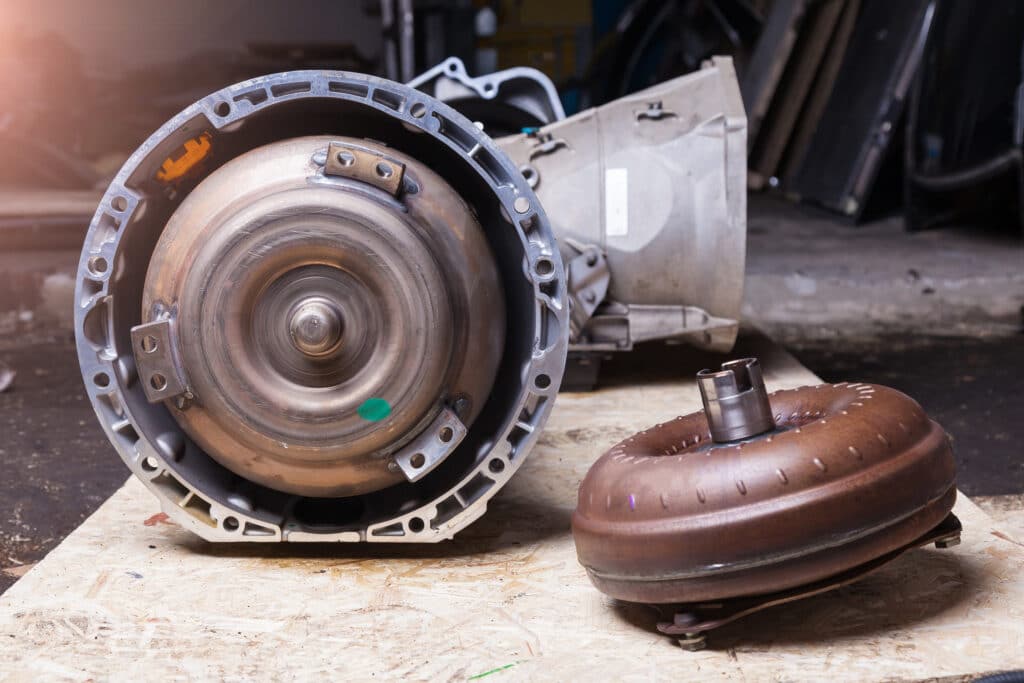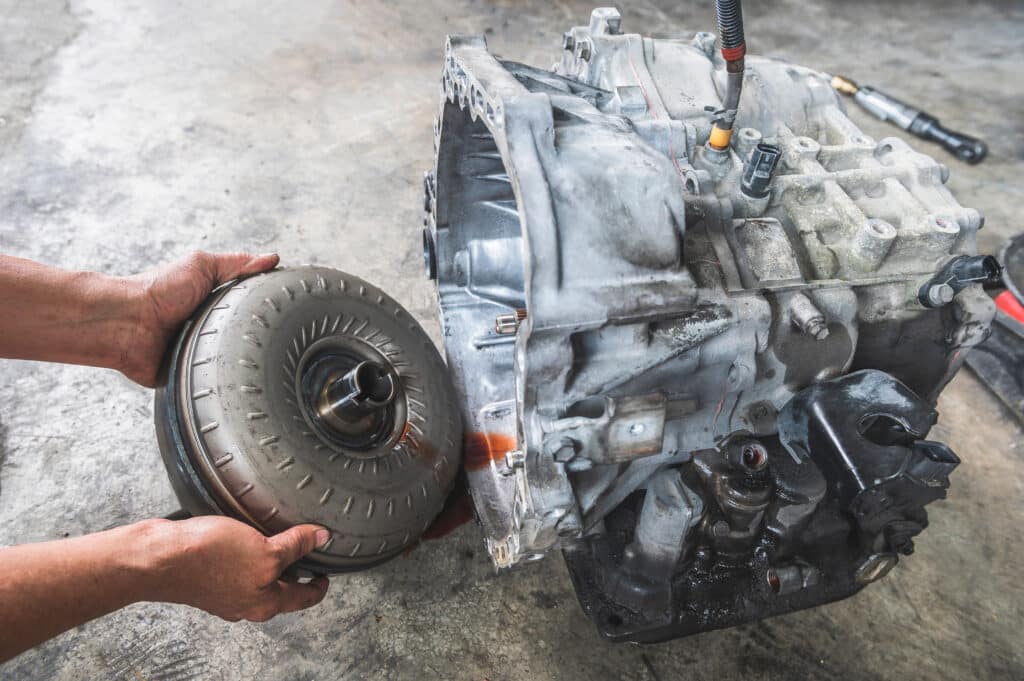You want to know what is the task of the torque converter in your car? Then read our blog article about this component here.
What is a torque converter?
The so-called torque converter automatic transmission actually consists of two main components. The torque converter and the actual automatic transmission. The torque converter is located between the engine and the transmission, at the point where the flywheel and clutch are located in a vehicle with a manual transmission.
In neutral, the torque converter actually has the same function as the clutch in vehicles with manual transmission. This means it separates the power connection between the engine and the transmission.
Of course, the torque converter restores the frictional connection between the engine and the automatic transmission as soon as the vehicle is to be driven off.

What does a torque converter do?
What components does the torque converter consist of?
- Pump wheel
- Turbine wheel
- Guide wheel
- Automatic transmission oil
- Converter lock-up clutch
The pump wheel of the torque converter is connected to the flywheel. The flywheel is bolted to the crankshaft of the engine. As soon as the engine is started, the pump wheel rotates at the same speed as the engine, since these components are firmly connected to each other. The opposite turbine wheel, which is connected to the gearbox, stands still when the engine is idling.
As soon as the pump wheel rotates, the automatic transmission oil in the torque converter is forced outward by centrifugal force, creating a swirl that increases the pressure. If the engine speed increases, the pressure also increases. As soon as the resistance of the transmission shaft is overcome by the pressure, the vehicle starts moving.
Torque converter clutch
Since the pump wheel always rotates a little faster than the turbine wheel during normal operation, power losses occur which can be prevented by the converter lockup clutch. If the converter lockup clutch is actuated during normal operation (driving mode), the pump wheel is braked somewhat. Thus, the pump wheel rotates at the same speed as the turbine wheel.
Torque clutch converter solenoid
The torque converter lockup clutch is controlled by a valve. In most cases, this valve is located in the mechatronics unit in the transmission itself. This unit is usually located directly under the oil pan of the automatic transmission.
Which cars have a torque converter?
As a rule, all vehicles with a conventional automatic transmission have a torque converter to transfer power from the engine to the automatic transmission. It should be noted, however, that the use of a normal automatic transmission in modern vehicles is declining due to the increasing prevalence of dual-clutch transmissions and CVT transmissions.
How much is a torque converter?
The price of a torque converter depends on various factors, such as the size, performance, quality and manufacturer of the converter. Therefore, it can be difficult to give an exact price. However, there are many different types of torque converters on the market, which can usually cost anywhere from a few hundred to several thousand dollars.

Bad torque converter symptoms
Some common symptoms of a bad torque converter include:
- Shuddering or vibration: A failing torque converter may cause the vehicle to shudder or vibrate during acceleration.
- Slipping: The transmission may slip or have delayed engagement when shifting gears.
- Overheating: A bad torque converter may cause the transmission to overheat due to increased friction and reduced efficiency.
- High RPMs: The engine may rev higher than normal, even at lower speeds.
- Decreased fuel efficiency: A faulty torque converter can reduce fuel efficiency due to increased slippage and decreased transmission efficiency.
- Unusual noises: You may hear strange noises such as whining, buzzing or grinding sounds coming from the transmission.

